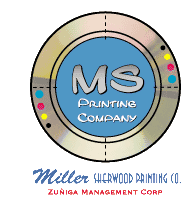The Don’ts of Hairline Rules
Written by Jaime Zuniga
Ahhh!!! You’ve just received your printing order from you favorite printer and the rules (lines) are not there or their breaking up barely visible in some spots.
What happened? Your print job looks great on the screen showing all the rules perfectly and not broken! You used a few thin horizontal lines to break up text and to make the document flow from one page to the next or thin vertical lines in your form so their not too dark.
The reason is a simple mistake but the consequence is not-so-simple. You used the default “Hairline” for the rule. The hairline option may look good on your laser printer or ink jet printer in the office or at home, because the resolution is usually around 300 to 600 dpi, making the smallest dot printed visible; but when imaged to a high-resolution PostScript device, such as an imagesetter or platesetter, it may cause your lines to disappear or show up as broken, because the width of the smallest dot is too small to be seen.
According to International Paper’s Pocket Guide a hairline is:
“The thinnest possible line or space that is visible.”
And a hair line rule is:
“The thinnest rule that can be printed, generally considered to be less than one point or 1/72" wide.”
When using a high-resolution PostScript device, such as an imagesetter or platesetter for final output to a press, the smallest line that will be visible without breaking up, is between 0.3 to 0.5 points. That's pretty thin considering a point is 1/72nd of one inch.
In your page-layout application a hairline is any line, frame or paragraph rule that has a line width less than 0.25 of one point. As you can see this size line is thinner than what a high-resolution PostScript device can reproduce well.
So stay away from the “Hariline” rule option and make it a practice to use no thinner than a 0.5 point rule. This way whether it’s your inkjet or favorite printer producing your printing project it will look right!



